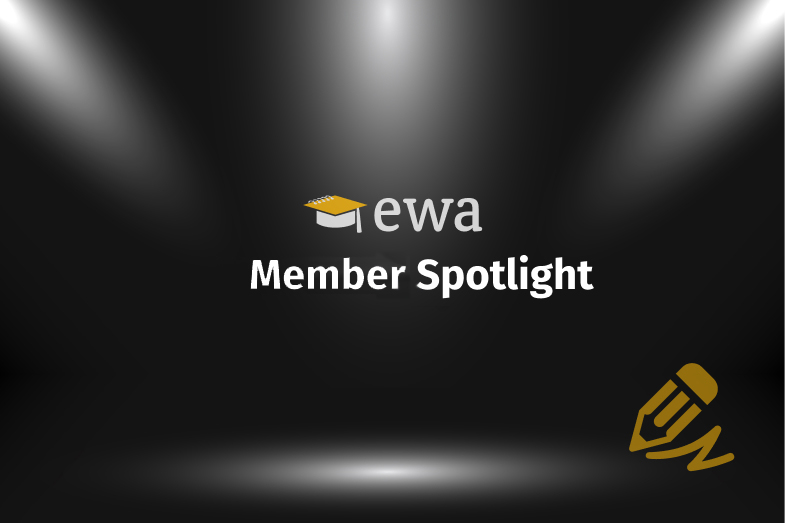
From Passion Project to Career: A Reporter’s Story
To Cover Education Well, Says Trisha Powell Crain, Know Your Community.

To Cover Education Well, Says Trisha Powell Crain, Know Your Community.
For Trisha Powell Crain, the statewide education reporter for AL.com (Alabama Media Group), the path to journalism was not a traditional one. She started out as a parent of school-aged children asking hard questions of local education officials.
Now, Crain has nearly a decade of experience covering education — a reality she describes as a “luxury.” She is a frequent and enthusiastic presence at EWA events. Crain recently took time away from a busy beat covering education in her home state of Alabama to answer questions from EWA about her experience as a journalist and the importance of beat reporting. Here are her written responses, edited for length and clarity.
What led you to the education beat? How did you get your start in journalism?
Asking questions about education and sharing those answers in a public way was a natural form of expression for me. As a single mother (divorced) who worked from home, I spent a lot of time volunteering at my children’s elementary school. Students in the district had mostly been middle- to upper-class white students since the district began in 1988. As the district enrolled more African-American, Hispanic and less affluent students, I publicly questioned the way administrators and teachers responded (harsher discipline, lower academic expectations for all students).
That led me to create a community nonprofit organization in 2006 to both improve our local schools and hold leaders accountable for their decisions. I built a website and published best practices and basic information (board meeting minutes, etc.) about our schools in order to “democratize” information among all of the stakeholders in our 17 schools.
Trisha Powell Crain
In 2009, I started writing about statewide education issues and with a small board, formed a nonprofit news organization in 2014 called the Alabama School Connection. (I wanted to be the Alabama version of Chalkbeat when we grew up.) I wasn’t very good at fundraising, and when AL.com offered me their spot as the statewide education reporter, I eagerly accepted.
A story you wrote recently about the first integrated public school in Sumter County, Alabama, drew national attention. How did you get that story idea and develop it?
I found that story during a June 2017 meeting of the Alabama Public Charter School Commission. I was the only person in the room that wasn’t connected to the commission or one of the charter applicants. As the group presented their idea, they kept mentioning students would engage in “blended” learning and how innovative that was. I thought they were talking about a mix of online and classroom learning and was confused as to why they thought that was innovative.
I knew a bit about the history of the Black Belt region and how segregation academies had depleted resources for public schools but did not initially pick up on the integration aspect.
It wasn’t until nearly the end of the presentation that one of the members of the group said something along the lines of “and it’s time that our children be able to go to school together.”
That’s when it hit me that by “blended,” the group meant blending black children and white children together in the same classroom. I followed the group closely over their planning year and told them all along the way that I believed the story had national significance, which according to the reaction the story received, it did.
That story is a strong example of beat reporting as well as the importance of local journalism. Is there anything else that’s important to know about how you tackled that story?
I knew that my ability to responsibly report that story, and those that are still underway, would in large part depend on building trusting relationships with people in the community, which is a two-hour drive from my home outside of Birmingham. I continue to develop new relationships there that help broaden the context and give me a better understanding of all that has happened in Sumter County that has gotten us all to this point.
What advice do you have for journalists about beat reporting in general and, maybe, specifically covering rural schools?
In my opinion, beat reporting, at least on the education beat I cover in Alabama, is all about relationships. I have an obvious bias: I genuinely care about outcomes for children. I am not bashful about coming at an issue from that perspective: what is best for the children? Being upfront about that bias has helped me establish a reputation for being fair, which has helped in developing new relationships.
Staying with this beat for so long (nearly 20 years if you count the PTO newsletters I published in the early 2000s) is a luxury that I really appreciate. I haven’t covered a lot about rural schools in Alabama, but I’m learning as much as I can along the way.
Learning about education in an area is more than just what happens in schools. Education happens everywhere in a community. Learning about the community helps with understanding the value of education in an area and how that education is delivered. So I do a lot of research before I start the actual writing. I spend a lot of time reading history books, visiting libraries and reading local news coverage whenever possible, to try to get a glimpse of everyday life in an area. I reach out to friends and contacts who might know something about the issue I’m pursuing to try to get a flavor of the nuances of the issue.
On the ground, I start conversations with anyone and everyone who will talk with me. Understanding the broader community, what is valued, what is feared, and where the pressure points are, helps me produce better reporting.
Your post will be on the website shortly.
We will get back to you shortly